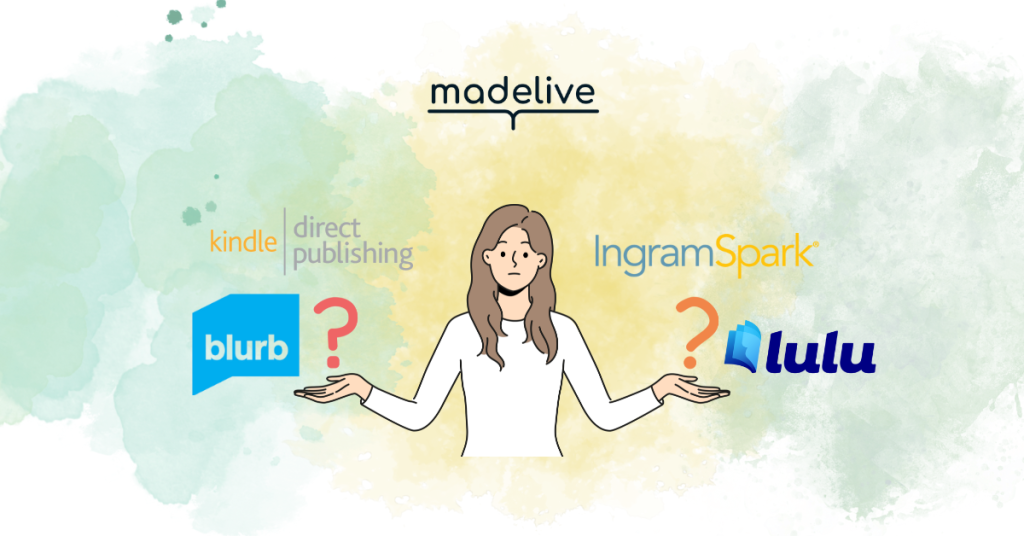Estimated reading time: 12 minutes
Finding the perfect illustrator for your children’s picture book goes beyond artistic style. The illustration process is about partnership, professionalism, and storytelling ability. Learn to identify these 12 critical warning signs before signing a contract to save time, money, and creative heartache. By recognizing red flags early in the illustrator selection process, you can avoid problematic partnerships, costly revisions, and disappointing results that don’t match your vision or effectively tell your story to young readers.
Table of contents
- Introduction
- Warning Sign #1: Portfolio Shows Only Standalone Images
- Warning Sign #2: Inconsistent Character Renderings
- Warning Sign #3: Limited Range of Expressions
- Warning Sign #4: Poor Communication Habits
- Warning Sign #5: Unwillingness to Show Process Work
- Warning Sign #6: No Children’s Book Experience
- Warning Sign #7: Vague or Missing Contract Terms
- Warning Sign #8: Reluctance to Discuss Timeline Details
- Warning Sign #9: No Questions About Your Story or Vision
- Warning Sign #10: Limited Technical Range
- Warning Sign #11: Excessive Focus on Style Over Storytelling
- Warning Sign #12: No References or Testimonials
- How to Streamline Your Illustrator Partnership
Introduction
Bringing your children’s book to life through illustrations is one of the most exciting steps in the publishing journey. But it can quickly become one of the most frustrating if you partner with the wrong illustrator. The difference between a dream collaboration and a project nightmare often comes down to recognizing warning signs before you sign a contract.
This guide will walk you through 12 critical red flags to watch for when evaluating potential illustrators for your picture book. By understanding these warning signs, you’ll be better equipped to find an illustrator who not only creates beautiful art but who also understands visual storytelling, maintains professional standards, and can bring your characters and world to life consistently.
Whether you’re self-publishing your first picture book or preparing to work with an illustrator on your tenth title, these insights will help you avoid costly mistakes and project delays that can derail your publishing timeline and diminish the quality of your finished book.
Warning Sign #1: Portfolio Shows Only Standalone Images
Why it’s a red flag:
An illustrator may create stunning individual images but still struggle with sequential storytelling, which is at the heart of picture book illustration. When a portfolio showcases only standalone pieces, it doesn’t demonstrate the artist’s ability to maintain consistency across multiple pages or convey narrative progression.
What to look for instead:
Seek illustrators who include series of images featuring the same characters in different scenarios or complete book spreads that tell a story. These samples demonstrate their understanding of visual narrative and their ability to maintain character consistency throughout a project.
Quick assessment tip:
Ask the illustrator about their experience with sequential storytelling and page-to-page consistency. Request to see complete book projects rather than just their favorite isolated images.
“I was initially drawn to an illustrator’s gorgeous character portraits, but when we started working together, I realized they struggled to maintain consistency across scenes. Looking back, their portfolio should have been a clue. It contained beautiful standalone pieces but no sequential storytelling examples.”
— Sarah K., self-published author
Warning Sign #2: Inconsistent Character Renderings
Why it’s a red flag:
Characters that look different from page to page will confuse readers and disrupt the flow of your story. Inconsistency in character appearance can signal that an illustrator lacks technical fundamentals or hasn’t developed systems to maintain visual continuity.
What to look for instead:
Look for portfolios that include multiple examples of the same character in different poses, expressions, and scenarios. This consistency demonstrates the illustrator’s ability to maintain character integrity throughout your book.
Quick assessment tip:
Request a simple character turnaround (front, side, and back views) of one of your main characters as a test project before committing to the full book. This small investment can save you from major disappointment later.
Warning Sign #3: Limited Range of Expressions
Why it’s a red flag:
Picture books rely heavily on characters’ emotions to engage young readers. An illustrator who can only render one or two expressions will create characters that appear wooden or emotionally flat, drastically limiting the emotional impact of your story.
What to look for instead:
Seek illustrators who demonstrate clear emotional range in their characters’ faces and body language. Their portfolio should show characters expressing various emotions that would be relevant to your story.
Quick assessment tip:
Ask to see examples of the same character expressing different emotions like joy, sadness, surprise, and fear. This will quickly reveal the illustrator’s ability to convey emotional nuance.
Warning Sign #4: Poor Communication Habits
Why it’s a red flag:
An illustrator’s communication style during initial discussions strongly predicts how the entire project will unfold. Slow responses, vague answers, or difficulty addressing your specific questions often signal future project delays and frustrations.
What to look for instead:
Value illustrators who provide prompt, clear responses that directly address your questions. Professional communication indicates respect for your time and project needs.
Quick assessment tip:
Note response time and thoroughness during initial inquiries. If you’re already experiencing communication issues before signing a contract, these problems will likely intensify once work begins.
How to Evaluate an Illustrator’s Communication Skills
- Send a detailed initial inquiry with specific questions about the illustrator’s process
- Set a mental deadline for their response (48-72 hours is reasonable)
- Assess whether they answered all your questions or selectively responded
- Note if they ask clarifying questions about your project
- Schedule a video call to evaluate their verbal communication skills
- Pay attention to their listening skills and whether they interrupt frequently
- Observe how they handle constructive discussions about their work
- Test their responsiveness with a follow-up questions after the initial conversation
Warning Sign #5: Unwillingness to Show Process Work
Why it’s a red flag:
Illustrators who are reluctant to share their process work—sketches, revisions, and development stages—may be inflexible or struggle with accepting feedback. This reluctance often indicates potential difficulties in the collaborative aspects of book creation.
What to look for instead:
Seek illustrators who openly share their creative process, including rough sketches, revisions, and development work. This transparency demonstrates confidence in their process and willingness to collaborate.
Quick assessment tip:
Ask to see a previous project’s progression from concept to completion. A professional illustrator should be able to show how their work evolves and improves through feedback cycles.
Warning Sign #6: No Children’s Book Experience
Why it’s a red flag:
Children’s books have unique conventions and requirements that differ from other illustration work. An illustrator without specific picture book experience may not understand age-appropriate content, visual pacing, or how to create illustrations that support beginning readers.
What to look for instead:
Look for illustrators with at least some understanding of picture book structure, even if their published experience is limited. They should comprehend the relationship between text and images in children’s books.
Quick assessment tip:
Discuss their knowledge of picture book conventions and formats. Ask questions about page turns, visual pacing, and how they would approach leaving space for text.
Warning Sign #7: Vague or Missing Contract Terms
Why it’s a red flag:
Unclear contracts or handshake agreements often lead to scope creep, rights disputes, and financial disagreements. Professional illustrators should have clear terms that protect both parties.
What to look for instead:
Seek illustrators who provide detailed agreements covering revisions, timelines, payment schedules, and rights assignments. Clear contracts demonstrate professionalism and business experience.
Quick assessment tip:
Evaluate their contract or proposal for specificity and professionalism. If they don’t offer a contract, provide your own and notice how they respond to it.
Warning Sign #8: Reluctance to Discuss Timeline Details
Why it’s a red flag:
Vague timelines or reluctance to discuss specific delivery dates often indicate that an illustrator is overcommitted or has poor time management skills. This can lead to significant project delays.
What to look for instead:
Professional illustrators provide realistic, specific scheduling information and are transparent about their availability and workload.
Quick assessment tip:
Ask for their typical turnaround time for different project phases (sketches, final art, revisions). Request information about their current project load and how your book fits into their schedule.
“After numerous missed deadlines that pushed my publication date back by months, I wish I’d paid more attention when my illustrator was vague about timeline commitments during our initial consultations. What seemed like flexibility was a lack of organization.”
— Michael T., indie publisher
Warning Sign #9: No Questions About Your Story or Vision
Why it’s a red flag:
An illustrator who asks few or no questions about your book’s content, themes, or vision may be taking a cookie-cutter approach rather than truly engaging with your unique story.
What to look for instead:
Value illustrators who ask thoughtful questions about your characters, setting, tone, and audience. These questions show they’re invested in understanding and enhancing your specific vision.
Quick assessment tip:
Note whether they ask about your book’s themes, audience, or characters during initial discussions. The best illustrators will want to understand your story before discussing style or approach.
Warning Sign #10: Limited Technical Range
Why it’s a red flag:
Some illustrators excel at character portraits but struggle with varied scenes, perspectives, or environments. This limited technical range can result in repetitive, flat illustrations that don’t fully bring your story to life.
What to look for instead:
Look for variety in compositions, angles, and environments within their portfolio. A diverse technical range indicates they can handle whatever your story requires.
Quick assessment tip:
Look for dynamic scenes rather than just character portraits in their portfolio. Can they effectively illustrate different settings, perspectives, and scenarios?
Warning Sign #11: Excessive Focus on Style Over Storytelling
Why it’s a red flag:
While a distinctive style is valuable, illustrators who prioritize aesthetics over visual narrative clarity may create beautiful but ineffective book illustrations. Style should enhance, not obscure, the story.
What to look for instead:
Seek a balance between artistic style and clear visual communication. The best illustrators understand that their primary job is to tell your story visually in a way children can understand.
Quick assessment tip:
Ask how they approach making complex story elements understandable to children. Their answer will reveal whether they prioritize storytelling or artistic expression.
Warning Sign #12: No References or Testimonials
Why it’s a red flag:
An illustrator without verifiable references or testimonials from previous clients may lack experience or may have had problematic professional relationships they’d prefer not to disclose.
What to look for instead:
Look for feedback from previous authors or clients that speaks specifically to the illustrator’s reliability, communication, and collaborative approach.
Quick assessment tip:
Request contact information for 1-2 previous clients, particularly other children’s book authors. A confident, professional illustrator will be happy to provide references.
Frequently Asked Questions
Look for sequential storytelling ability, not just standalone images. The portfolio should include series of images with the same characters in different scenarios, consistent character renderings across multiple illustrations, a range of emotional expressions, and variety in compositions and environments. Most importantly, the illustrations should clearly tell a story, not just showcase artistic style.
Communication style is extremely important and often predicts the success of your entire project. Poor communication during initial inquiries typically escalates into bigger problems during the project. Look for prompt, thorough responses that address your specific questions. Professional illustrators should communicate clearly about expectations, timeline, process, and should be receptive to feedback.
While it’s not absolutely essential, experience with children’s books is highly valuable. Picture books have unique requirements including visual pacing, page turns, leaving space for text, and age-appropriate content. An illustrator with children’s book experience will understand these conventions. If you’re considering someone without specific picture book credits, ensure they at least understand the format and are willing to learn its unique requirements.
Key contract terms to discuss include: revision policies (how many rounds are included), detailed timeline with specific milestones, payment schedule, copyright and usage rights, cancellation policies, and additional fees for scope changes. A professional contract protects both parties and sets clear expectations. Be wary of illustrators who work without contracts or provide vague terms.
Look for sequential work in their portfolio that tells a cohesive story across multiple images. Ask them to explain how they approach visual pacing, page turns, and creating visual interest while maintaining story clarity. Professional illustrators should be able to articulate how their illustrations will enhance your narrative rather than simply decorating it.
Professional illustrators should ask about your story’s plot, themes, and emotional tone; your target audience’s age range; your characters’ personalities and appearances; the setting and time period; your vision and preferred style; text placement considerations; and your publishing timeline. The depth of their questions reveals their level of investment in your specific project.
Most professional illustrators include 2-3 rounds of revisions in their standard contracts. The revision process typically includes: rough sketches (1st revision), refined sketches (2nd revision), and final colored artwork (final revision). Be cautious of illustrators who offer unlimited revisions (suggesting inexperience with professional boundaries) or those who severely limit revisions (indicating potential inflexibility).
The most common problems include missed deadlines, communication breakdowns, inconsistent character renderings, misalignment between vision and execution, unexpected additional costs, and rights disputes. Many of these issues can be prevented by carefully evaluating potential illustrators using the warning signs in this article and establishing clear contracts before work begins.
How to Streamline Your Illustrator Partnership
While identifying these warning signs can help you avoid problematic illustrators, there are also positive steps you can take to make any illustrator partnership more successful.
Using Visualization Tools to Communicate More Clearly
One of the biggest challenges in author-illustrator partnerships is clearly communicating your vision. This is where Made Live’s visualization tools can transform your collaboration.
Our self-publishing software helps you create professional layout mockups, allowing you to show—not just tell—your illustrator exactly what you’re envisioning. By establishing clear visual reference points from the beginning, you’ll reduce miscommunications and revision cycles.
Structured Support for Complete Publishing Success
For many authors, finding the right illustrator is just one challenge in the complex journey of creating a children’s book. That’s why we offer multiple support options depending on your needs:
Self-Publishing Software: Our intuitive platform helps you visualize your book layout, making it easier to communicate with illustrators and understand how text and images will work together.
Self-Publishing Club: Join our 12-week guided program that combines our software with live training and small-group support. We’ll walk you through every step from concept to publication—including finding and working effectively with illustrators.
Coaching: Our personalized coaching services offer customized support for your specific project needs, whether that’s developmental editing, illustration direction, or publishing strategy.
Related Links
- Children’s Book Illustration Guide: The Illustration Process
- Returning To Your Project
- Designer View
- Publishing Contracts and Rights for Children’s Books
- How to Find and Hire a Professional Illustrator for Your Book
Conclusion
These warning signs aren’t absolute disqualifiers, but they should prompt further questions and careful consideration before committing to an illustrator partnership. By combining your artistic instincts with this evaluation framework, you’ll be better equipped to find an illustrator who balances creative talent with professional reliability.
Remember, the best illustration partnerships aren’t just about beautiful artwork—they’re about finding a creative collaborator who understands visual storytelling, maintains professional standards, and can bring your unique vision to life consistently from cover to cover.
Take Your Illustration Planning to the Next Level
Ready to create clearer direction for your illustrator? Download our free Picture Book Page Planner to map your story’s visual flow and create a more effective illustration brief.
New to children’s book creation? Sign up for our newsletter to receive weekly tips on working effectively with illustrators and navigating the self-publishing journey.




